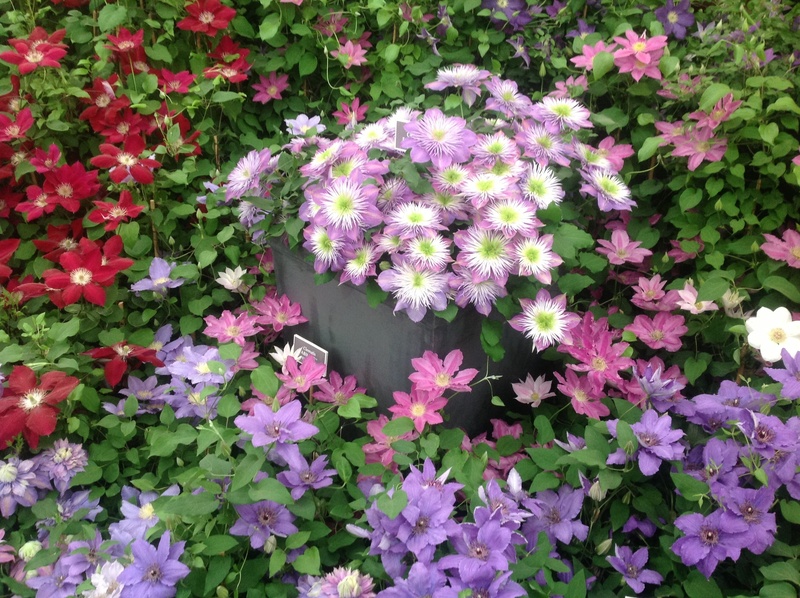The Secrets of Professional Hedge Shaping Techniques
Posted on 23/09/2025
The Secrets of Professional Hedge Shaping Techniques
If you have ever gazed with admiration at the perfectly manicured gardens of stately homes or the artistic display of hedges in renowned parks, you may have wondered about the secrets behind professional hedge shaping techniques. Whether you're a gardening enthusiast or a beginner seeking to enhance your landscape, mastering hedge shaping can take your outdoor space to the next level. This comprehensive guide will unveil industry tips, advanced methods, and expert strategies that transform ordinary hedges into living masterpieces.

Why Hedge Shaping Matters: More Than Just Aesthetics
Hedge shaping is more than an aesthetic pursuit; it serves practical and biological purposes. A well-shaped hedge:
- Improves plant health by increasing air circulation and sunlight exposure
- Discourages pests and disease build-up
- Enhances privacy and property boundaries
- Boosts curb appeal and property value
Understanding the Basics of Hedge Shaping
Before you pick up your shears, it's vital to understand the fundamental principles of professional hedge shaping.
Selecting the Right Hedge Species
Not all shrubs are suitable for neat shapes or intricate designs. The best options for hedge trimming and sculpting include:
- Boxwood (Buxus sempervirens): Classic, dense, and versatile
- Yew (Taxus baccata): Hardy and adaptable
- Privet (Ligustrum): Fast-growing and forgiving
- Hornbeam (Carpinus betulus) and Beech (Fagus sylvatica): Great for formal shapes
The Importance of the Right Tools
A professional finish requires high-quality, well-maintained tools. For effective hedge maintenance, keep the following on hand:
- Hand shears for precision shaping
- Hedge trimmers (manual, electric, or petrol-powered) for larger surfaces
- Loppers for thicker branches
- String and stakes to mark straight lines or geometric shapes
- Protective equipment: gloves, eye protection, ear protection for powered tools
The Best Timing for Trimming and Shaping Hedges
Understanding when to shape hedges is key to healthy, beautiful shrubs:
- Evergreen Hedges: Late spring or early summer after new growth has emerged
- Deciduous Hedges: End of winter or early spring before bud break
- Formal Shapes: Light pruning in mid-summer as well for maintenance
Proven Techniques for Professional Hedge Shaping
1. Achieving Straight Lines and Even Surfaces
An even line is the hallmark of a professionally shaped hedge. Use the following approaches:
- Stretch string between stakes to mark out the desired height and width
- Cut from the bottom up to avoid shaping errors and uneven taper
- Step back periodically and check your progress from a distance
- Shape the hedge so it's wider at the base than at the top for sunlight penetration
2. The Art of Tapering or 'Batter'
Professional gardeners always shape hedges with a slight taper, a subtle technique known as "batter." This means the base is marginally broader than the top, typically by a few centimeters:
- Improves light exposure to lower branches
- Helps shed snow and rain
- Prevents "legginess" and bare patches at the bottom
3. Mastering Curves and Topiary Designs
For advanced hedge shaping, such as balls, spirals, or animal shapes, patience and planning are crucial.
- Start with a clear template or wireframe for complex designs
- Clip in stages: begin with rough cuts, refine with precise snips
- Use hand shears for tight curves and final touches
- Regularly step back to view the form from multiple angles
4. Dealing with Overgrown or Neglected Hedges
Bringing a neglected hedge back into shape is a common challenge. Professional techniques include:
- Cutting back no more than one-third of the growth at a time to avoid shock
- Encouraging regrowth with fertilizing and mulching
- Staggering severe cuts over multiple years for full recovery
- Removing dead or diseased wood entirely
Advanced Secrets from Professional Landscapers
Embracing the Science: Plant Response to Pruning
Understanding how hedges react to trimming leads to healthier growth and neater results. Each cut stimulates buds just below, causing new shoots. Targeted and well-timed pruning encourages dense, compact growth--the foundation of a robust, shapely hedge. Avoid over-pruning, as this creates stress and patchy regrowth.
Using Templates, Guides, and Technology
Some experts use shaped templates or forms for topiary, especially for symmetry. Others incorporate laser levels or line markers for accuracy on long hedges. Laser tools ensure perfectly horizontal or vertical lines, giving your hedge that unmistakable professional finish.
Fine-Tuning with Seasonal Adjustments
Each season requires a different approach:
- In spring, focus on formative shaping after the risk of frost passes
- Summer is ideal for refining edges and tackling vigorous growth
- In autumn, limit trimming to light shaping--avoid hard cuts that expose tender wood to winter cold
- Avoid late autumn and winter cutting for most species
Common Mistakes in Hedge Shaping to Avoid
- Cutting too much, too quickly: Leads to sparse foliage or branch dieback
- Ignoring the base: Results in thinned-out bottoms and dense tops that shade out lower branches
- Failing to clean tools: Can spread diseases and cause ragged cuts
- Not checking lines frequently: Leads to lopsided or uneven results--step back and review often
- Pruning at the wrong time: May damage plants or stunt growth
Creative Hedge Sculpting Ideas: Let Your Garden Stand Out
Professional hedge shaping isn't limited to straight lines or box shapes. With experience, you can explore:
- Living walls or screens with wave, curve, or zigzag patterns
- Layered heights: stepping or terracing multiple hedge rows
- Lettering and logos for contemporary or commercial landscapes
- Topiary creatures: animals, birds, geometric figures
- Hedge mazes or labyrinths for grand statements
How to Keep Hedges Healthy After Shaping
Health sustains beauty. After executing professional hedge shaping techniques, ensure long-term vigor with:
- Regular watering (especially for newly shaped or young hedges)
- Applying balanced fertilizer in spring for robust growth
- Mulching to conserve moisture and suppress weeds
- Monitoring for pests and diseases--treat promptly if detected
- Annual or semi-annual soil testing

Frequently Asked Questions about Hedge Shaping
How often should I shape my hedges?
This depends on the species and desired look. Formal hedges may need trimming every 4-8 weeks during the growing season. Informal or flowering hedges can be cut once or twice yearly.
Is it better to use manual or electric trimmers?
Both have their place in hedge pruning. Manual shears allow for precision and control in detail work, while electric or petrol trimmers are efficient for large, straight stretches. Many professionals use both.
Can I shape hedges in any weather?
Ideally, avoid trimming in intense sun, extreme heat, frost, or when hedges are wet. Dull blades or poor weather conditions can cause uneven cuts and stress the plant.
How do professionals achieve that perfect finish?
Attention to detail sets the professionals apart. They check their lines constantly, use professional-grade tools, shape in stages, and always start with a plan--whether using string, stakes, templates, or their trained eyes.
Conclusion: Transform Your Garden with Expert Hedge Shaping
The secrets to professional hedge shaping techniques are a synthesis of scientific knowledge, artistry, and consistent care. From choosing the right species and employing sharp, well-maintained tools, to mastering timeless techniques like batter and topiary, anyone can elevate their landscaping skills. Whether your vision is neat, formal lines or imaginative shapes, remember:
- Plan your design with the plant's health in mind
- Cut carefully using proper tools and optimal timing
- Maintain your hedges year-round for lasting results
- Never underestimate the value of creativity and patience

